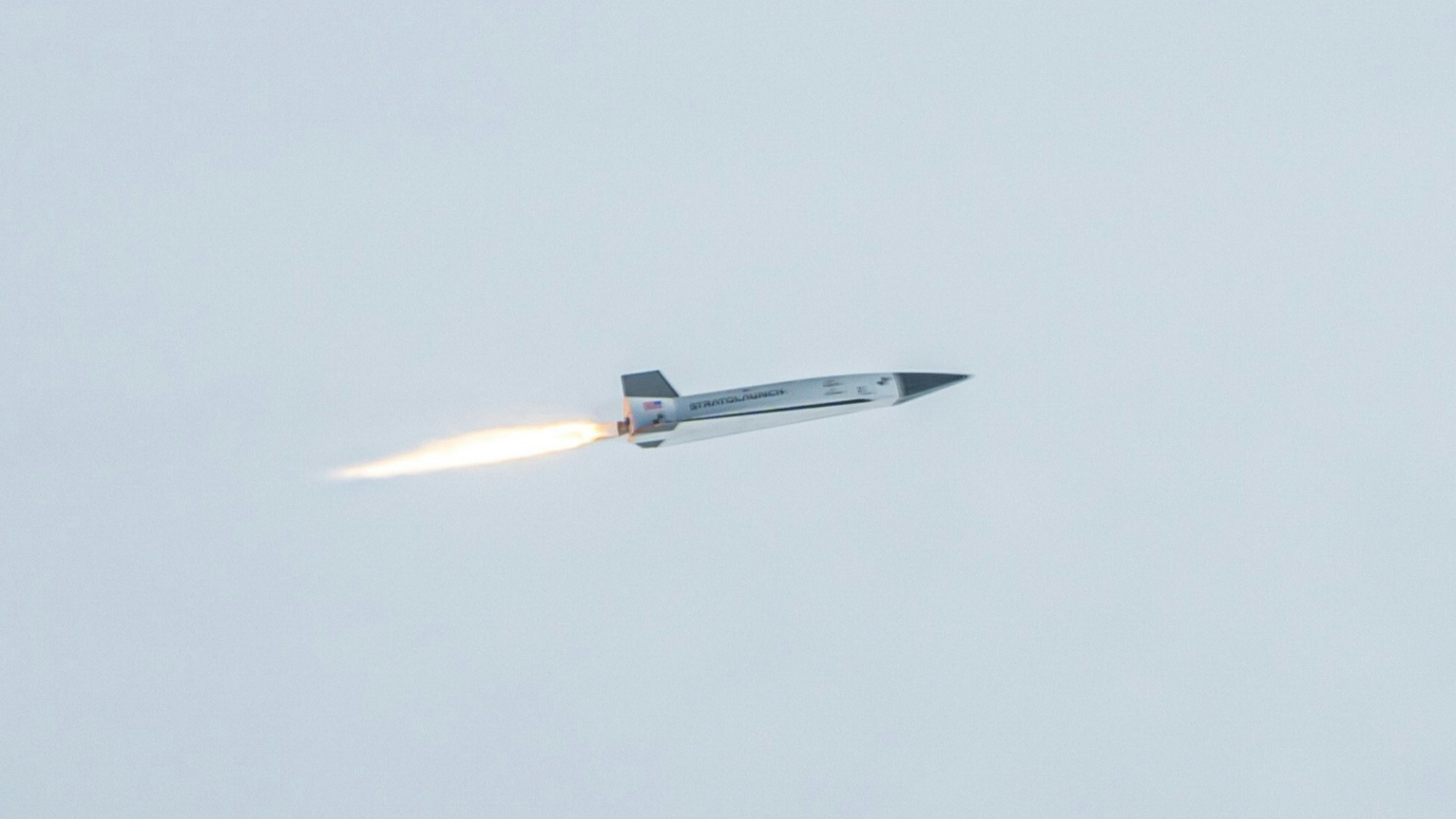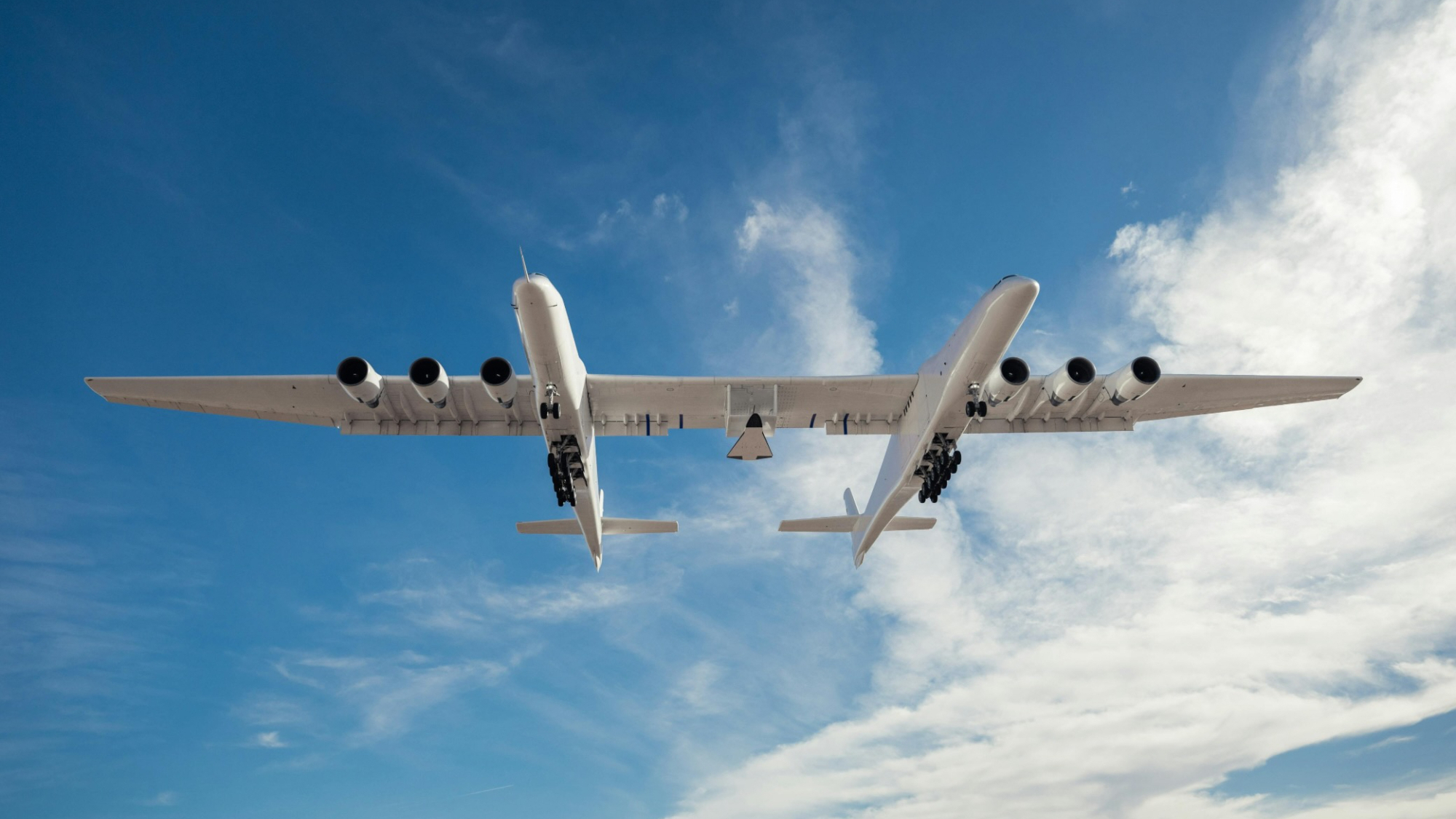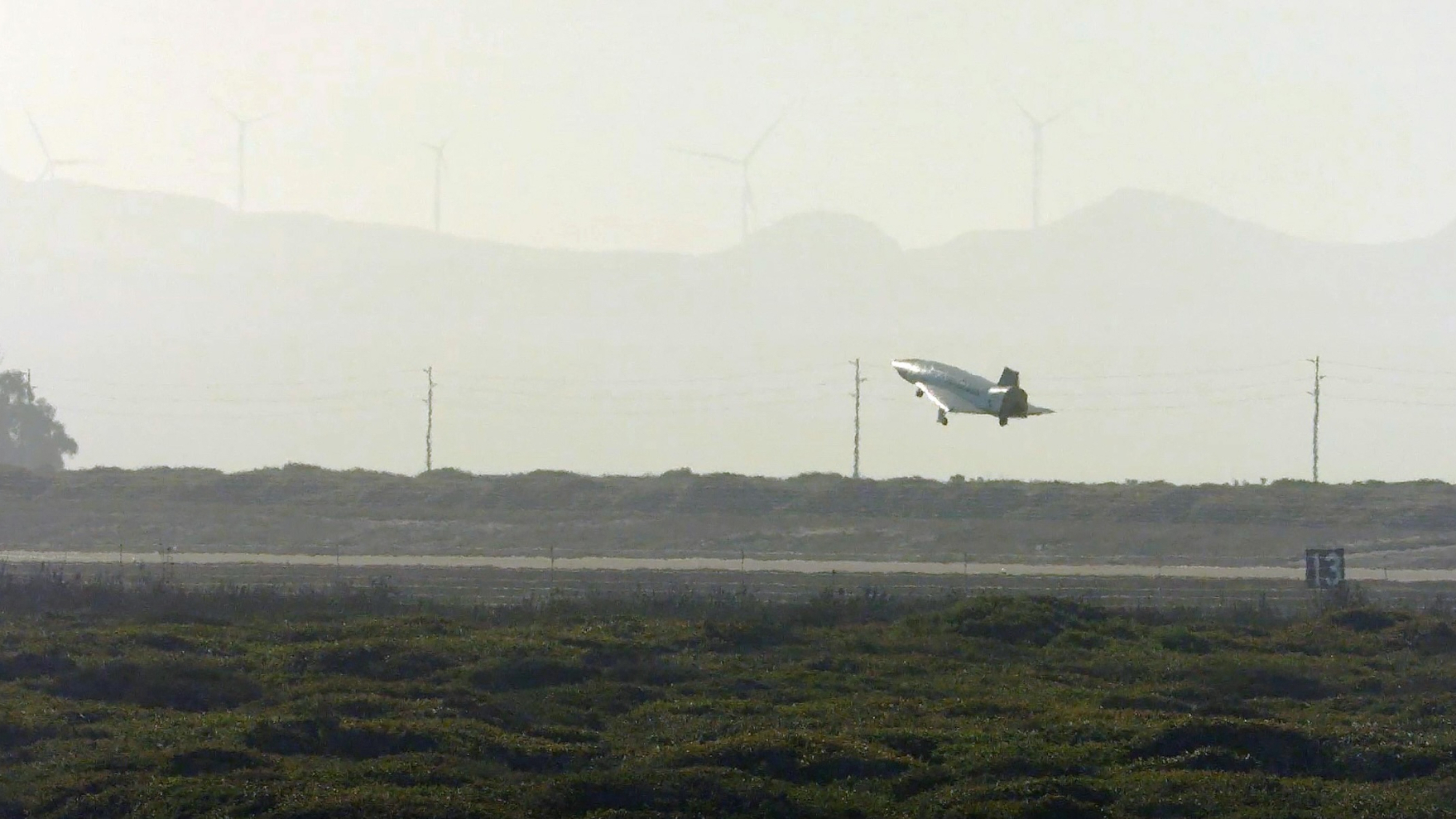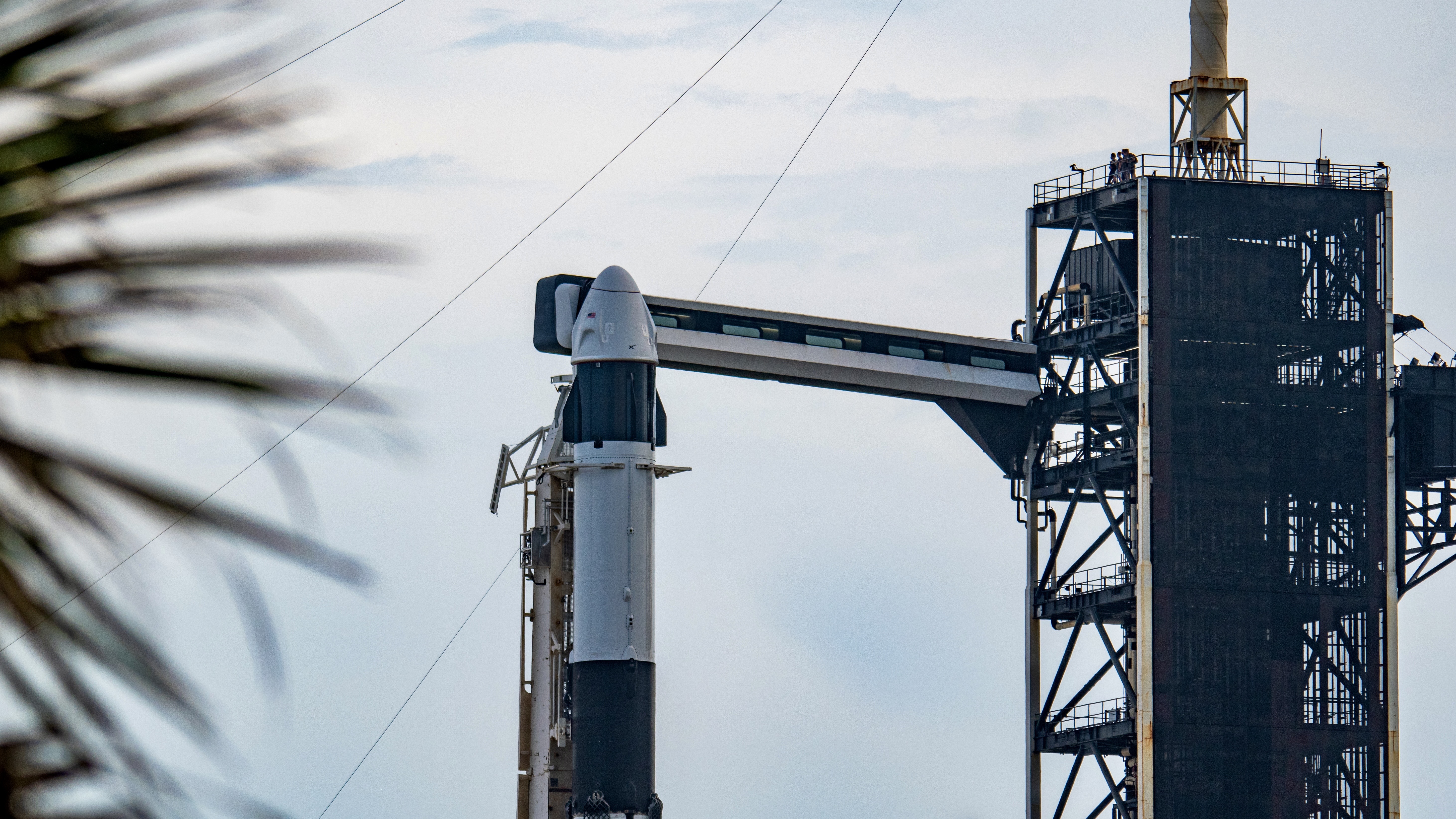
Stratolaunch Systems has gone hypersonic — twice.
Stratolaunch took its uncrewed Talon-A2 prototype to hypersonic speeds for the first time this past December, then repeated the feat in March, the company announced on Monday (May 5).
"We've now demonstrated hypersonic speed, added the complexity of a full runway landing with prompt payload recovery and proven reusability," Stratolaunch President and CEO Zachary Krevor said in a statement on Monday. "Both flights were great achievements for our country, our company and our partners."

Microsoft co-founder Paul Allen established Stratolaunch in 2011, with the goal of air-launching satellites from a giant carrier plane called Roc, which has a wingspan of 385 feet (117 meters). That vision changed after Allen's 2018 death, however; the company is now using Roc as a platform to test hypersonic technology.
Hypersonic vehicles are highly maneuverable craft capable of flying at least five times the speed of sound. Their combination of speed and agility make them much more difficult to track and intercept than traditional ballistic missiles. The United States, China and other countries view hypersonic tech as vital for national security, and are therefore developing and testing such gear at an ever-increasing pace.
Stratolaunch, Roc and the winged, rocket-powered Talon-2A are part of this evolving picture, as the two newly announced test flights show. They were both conducted for the U.S. military's Test Resource Management Center Multi-Service Advanced Capability Hypersonic Test Bed (MACH-TB) program, under a partnership with the Virginia-based company Leidos.
On both occasions, Roc lifted off from California and dropped Talon-2A over the Pacific Ocean. The hypersonic vehicle then powered its way to a landing at Vandenberg Space Force Base, on California's Central Coast.
Get the Space.com Newsletter
Breaking space news, the latest updates on rocket launches, skywatching events and more!
"These flights were a huge success for our program and for the nation," Scott Wilson, MACH-TB program manager, said in the same statement.
"The data collected from the experiments flown on the initial Talon-A flight has now been analyzed and the results are extremely positive," he added. "The opportunity for technology testing at a high rate is highly valuable as we push the pace of hypersonic testing. The MACH-TB program is pleased with the multiple flight successes while looking forward to future flight tests with Stratolaunch."

Stratolaunch's statement didn't provide a payload list for the two flights, and a Department of Defense press release about them was similarly vague.
But we do know at least one piece of tech that Talon toted — Northop Grumman's Advanced Hypersonic Technology Inertial Measurement Unit, which is designed to help hypersonic vehicles navigate.
"Survivability of the navigation unit, also known as a hemispherical resonator gyroscope, is a major accomplishment due to the harsh environment hypersonic speed presents and the intense forces experienced as the technology operates within Earth’s atmospheric boundary," Northop Grumman representatives said in a different statement. "This technology collected hours of critical ground and flight data, pivotal for future development."
Stratolaunch isn't the only American company providing the U.S. military and other customers with a testbed for hypersonic tech: California-based Rocket Lab flies a suborbital variant of its workhorse Electron rocket called HASTE (Hypersonic Accelerator Suborbital Test Electron) for this purpose.
HASTE has flown three times to date, on each occasion from the Mid-Atlantic Regional Spaceport in Virginia. And the cadence could pick up in the near future: Both the U.S. and U.K. militaries recently picked Rocket Lab as a potential partner for their hypersonic-tech programs.
Join our Space Forums to keep talking space on the latest missions, night sky and more! And if you have a news tip, correction or comment, let us know at: community@space.com.

Michael Wall is a Senior Space Writer with Space.com and joined the team in 2010. He primarily covers exoplanets, spaceflight and military space, but has been known to dabble in the space art beat. His book about the search for alien life, "Out There," was published on Nov. 13, 2018. Before becoming a science writer, Michael worked as a herpetologist and wildlife biologist. He has a Ph.D. in evolutionary biology from the University of Sydney, Australia, a bachelor's degree from the University of Arizona, and a graduate certificate in science writing from the University of California, Santa Cruz. To find out what his latest project is, you can follow Michael on Twitter.
You must confirm your public display name before commenting
Please logout and then login again, you will then be prompted to enter your display name.
